
What Does It Mean to Lead a Sales Team Effectively?
Those who lead a sales team inspire people toward a shared vision and empower them to achieve it, while those who manage a sales team focus on overseeing daily operations and processes. Sales leadership focuses on motivation, culture, and long-term growth, playing a central role in driving sales team performance metrics and results.
Leaders define success, align metrics with company goals, and provide coaching, tools, and incentives that enable reps to meet and exceed benchmarks consistently. This alignment ensures performance is measurable, targets are achievable, and progress is sustained over time. Effective leaders possess a combination of sales leadership strategies that balance proactive leadership with reactive management.
Proactive leadership anticipates trends, forecasts accurately, and drives innovation. By contrast, reactive management responds quickly to challenges and shifting opportunities. Striking the right balance keeps the team adaptable while maintaining a clear path toward long-term success.

The role of a sales leader in setting goals and driving performance
A sales leader connects individual performance, team objectives, and the company’s growth strategy when setting sales goals that motivate the team and support revenue goals. This requires an understanding of the company’s growth strategy and a strategic alignment with the sales compensation plan essential to driving company objectives.
Top-performing leaders also leverage sales goal tracking software like QuotaPath to drive quota attainment tracking and maintain high motivation.
For instance, David Thai, RevOps Team Lead at Augury said, “Our reps love the forecasting earnings feature… it does kind of drive a little bit more of incentive for them to kind of differentiate, you know, pitch harder… that’s really an invaluable driver of morale and just understanding how you make money at the end of the day.”
Similarly, Rootly’s Director of Sales, Andre King, shared that, “Visibility into their earnings has changed what the reps are pushing for… showing your reps how much more they can make on longer contracts changed how they sell.”
By combining strategic alignment with tools that make progress and earnings transparent, sales leaders can turn targets into tangible motivators, driving individual and team performance.
Coaching vs. managing: why leadership style matters
A sales leader’s style also shapes more than daily operations.
It influences team performance, engagement, and long-term growth. Leaders who lean too heavily on managing may hit short-term targets but risk missing opportunities to develop skills, foster innovation, and retain top talent.
Coaching, on the other hand, builds capability and confidence, equipping reps to consistently improve their performance.
Directive and developmental coaching are two distinct coaching styles that leaders can draw from depending on the situation. While directive coaching diagnoses the issue and prescribes the solution, Developmental coaching uses questions to guide reps toward their own solutions, building independence and adaptability.
Pairing both styles with effective sales enablement equips leaders with the tools and training to make coaching more impactful and sustainable.
How to Set Achievable Sales Targets For Your Team
Setting sales targets that inspire performance without overwhelming your team is a balancing act. The following steps will help you create achievable, data-driven goals that align with business priorities and keep your reps focused on what matters most.
Aligning individual goals with company objectives
Drive sales productivity by ensuring every rep’s targets contribute directly to the company’s broader growth strategy. Establish this alignment with a North Star Metric (NSM) — a clear, measurable indicator that reflects how the business creates value and grows over time. Tying individual goals to the NSM gives reps a common focal point and understanding of how their day-to-day activities influence the organization’s success.
This approach not only keeps priorities consistent across the team but also strengthens collaboration between sales and other functions, as everyone works toward the same overarching objective.
Using historical performance data to forecast accurately
Once individual goals are aligned with company objectives, use past performance data to set targets that are both ambitious and attainable. Review historical sales results, conversion rates, and pipeline metrics to identify realistic benchmarks and spot trends that can inform your projections. Using historical performance data offers valuable insights, greater forecasting accuracy, and enables informed sales target decisions.
How compensation plans influence target setting
Target setting defines what sales teams are expected to achieve, such as quota, revenue, or retention. Sales compensation plans provide the incentives tied to those targets. For target setting to be credible and effective, leadership needs to: model possible outcomes, forecast payout risk, and test comp plan behaviors ahead of rollout.
For instance, the QuotaPath compensation management platform helps streamline these processes, eliminating manual calculations.
The impact of compensation on behavior:
Compensation structures directly influence how sales reps prioritize their efforts and approach their work.
Incentive Alignment
- Sales reps are more likely to focus on activities that directly lead to rewards.
- Accelerators (e.g., higher payouts after hitting quota) boost effort late in the quarter.
Increased Deal Volume & Size
- Reps push to close more deals or larger deals when payout potential is visible.
- Clear line-of-sight to earnings encourages proactive selling.
Healthy Competition
- Transparent compensation structures (with visibility tools like QuotaPath) drive reps to outperform peers.
Deal Structuring & Prioritization
- Reps favor product lines, contract lengths, or account types with higher payout multipliers.
- Example: Incentives for multi-year contracts lead to more long-term deals sold.
Pipeline Management
- Reps become more disciplined in tracking and updating CRM data if it affects payouts.
Quota Attainment Strategies
- Compensation plans can drive behaviors like:
- Pulling deals forward to hit quota.
- Sandbagging if accelerators are poorly structured.
- Gaming plans (if not well-designed).
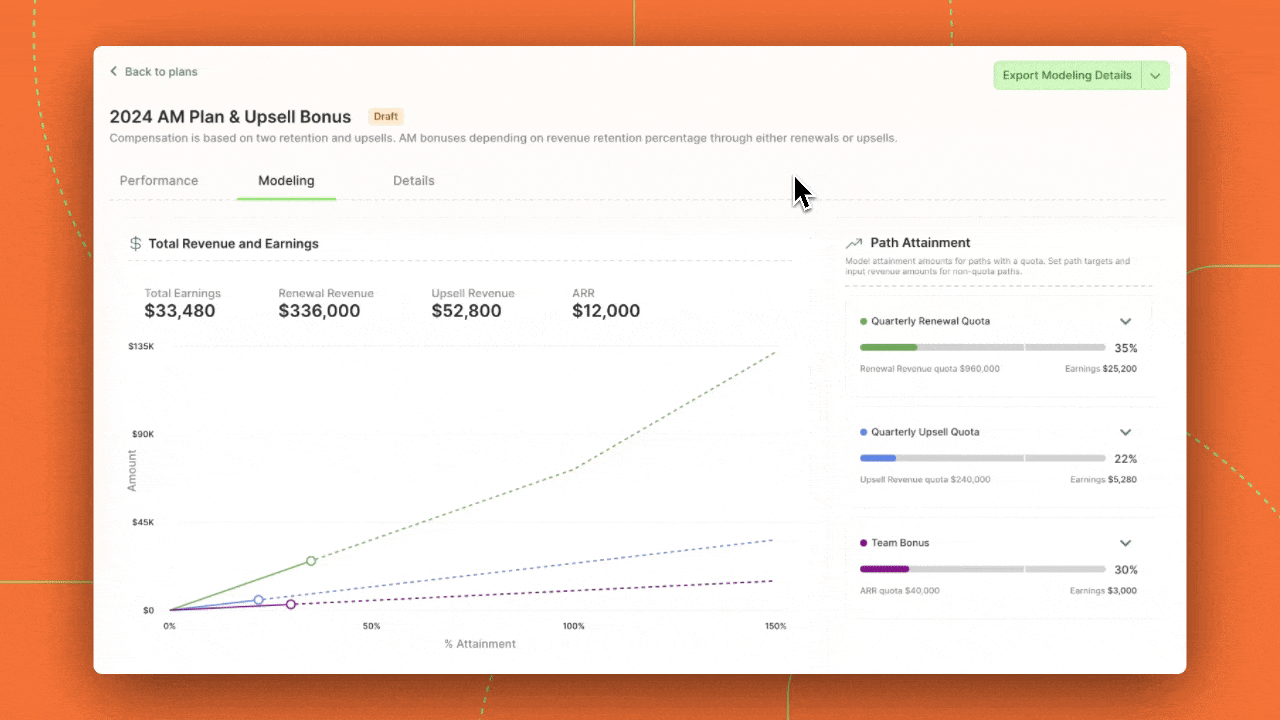
How QuotaPath users simulate and adjust plan modeling.
Our customers use QuotaPath to easily model and test compensation plans before launching them.
For instance, NeuroFlow requested a tool to mock up and run compensation scenarios, and QuotaPath’s Draft Plans feature was born.
As NeuroFlow’s Systems Operations Manager, Genevieve Moss-Hawkins explained, “Really early on, we provided feedback about wanting to mock up a plan and run scenarios without using the production environment… During our time as customers, QuotaPath built and released Draft Plans. We’ve used it for at least one year of commission planning.”
Whistic also leverages QuotaPath to simplify their compensation management process. “We just finished up year-end for 2024 kickoff for 2025, so there was a lot of modeling exercises and a lot of planning. I think the modeling and kind of the more planning element is something that still is a little new, but improving,” said Taggart Befus, Revenue Operations Manager at Whistic
Try the most collaborative solution to manage, track and payout variable compensation. Calculate commissions and pay your team accurately, and on time.
Start TrialBest Practices For Motivating Your Sales Team
Motivation is the fuel that keeps a sales team performing at its best. These best practices will help you sustain high energy, boost engagement, and inspire reps to meet or exceed their targets consistently.
Leveraging incentives and commission structures
Commission tracking software, such as QuotaPath, drives better performance by providing sales reps with real-time visibility into how their activities translate into earnings. That transparency clarifies incentives, boosts motivation, and reduces disputes so reps can stay focused on selling.
McKinsey found that companies that focus on their people’s performance are 4.2 times more likely to outperform their peers, realizing an average 30 percent higher revenue growth and experiencing attrition five percentage points lower.
“The sales team loves having the ability to see their pipeline, forecast potential commissions, and understand exactly when they’ll get paid…QuotaPath keeps them motivated and eliminates the back-and-forth,” said Genevieve.
Recognizing and rewarding consistent performance
Simple practices like peer recognition, monthly awards, or shout-outs in team meetings are effective ways to motivate sales team members, reinforce desired behaviors, and sustain momentum.
According to Gallup, employees who don’t feel adequately recognized are twice as likely to say they’ll quit in the next year — underscoring the link between recognition and retention. By making recognition timely, authentic, and tailored to individual preferences, leaders can boost morale, strengthen loyalty, and encourage reps to keep performing at their best.
Building a transparent and supportive culture
Transparency is crucial to the success and effectiveness of your sales compensation plan.
Compensation transparency fosters trust, enhances plan adoption, and boosts sales team motivation. There are fewer commission disputes and better morale when reps understand how they earn incentives and have visibility into payout calculations. Ways to incorporate compensation transparency include:
- Enabling reps to approve their commissions in a multi-level approval workflow
- Locking plan data once it’s approved
- Providing deal-level traceability of payments to reps
- Giving reps access to earnings dashboards
- Providing an automated dispute process

What To Do When Your Team Is Not Hitting Targets
Even top-performing teams face slow periods or missed goals. Here’s how to identify the root causes, adjust your strategy, and keep morale strong when your team is falling short.
Identifying root causes (pipeline, process, compensation issues)
Before making changes to your sales strategy or compensation plan, pinpoint the factors preventing your team from hitting targets by examining key performance indicators and market conditions.
Look at:
- Sales activity metrics: Calls, emails, demos—are reps putting in the work?
- Pipeline health: Are there enough qualified opportunities at each stage?
- Conversion rates: Identify where deals are falling off.
- Quota and compensation alignment: Are goals realistic and incentivizing the right behavior?
- Market and competitive changes: Has something shifted externally?
To determine if it’s time to change your comp plan, Ryan Macia, CFO at Osano, recommends you start evaluating comp plans when there’s a misalignment between actual performance and plan expectations. Then, once you’ve identified a gap, Anne Pao, Founder & CEO at Ignite Consulting, suggests engaging the sales team to understand what they find confusing or demotivating about the plan.
Adjusting goals and expectations strategically
When performance falls short, adjust goals and expectations in a way that refocuses the team while still driving toward overall business objectives.
- Coach and re-skill: Prioritize training and individualized coaching.
- Refine targeting: Ensure reps are focused on the right ICPs and segments.
- Optimize the sales process: Remove friction and clarify next steps at each stage.
- Adjust comp plans if needed: Ensure they’re driving desired outcomes.
- Collaborate with marketing: Improve lead quality and nurture support.
Communicating setbacks without damaging morale
When reps aren’t achieving sales targets, the way leaders communicate can mean the difference between a motivated rebound and a drop in morale. Combining transparency, empathy, and ownership helps maintain trust and keep the team engaged. Be clear about the challenges, acknowledge the team’s efforts, and share the plan for moving forward, showing that setbacks are a shared responsibility and an opportunity to improve together.
Design, track, and manage variable incentives with QuotaPath. Give your RevOps, finance, and sales teams transparency into sales compensation.
Talk to SalesHow QuotaPath Helps You Lead Your Team To Sales Success
The right tools make it easier to lead a sales team toward hitting and surpassing their goals. QuotaPath provides the visibility, automation, and insights necessary to align compensation with strategy, boost motivation, and drive consistent results.
Automate compensation to reduce admin overhead
When you automate sales commissions, you free up valuable time, reduce calculation errors, and eliminate the inefficiencies of manual spreadsheets.
Augury experienced this firsthand after implementing QuotaPath.
“It used to take the full 45 days to do quarterly commissions. Now it takes 15 days or less,” said David.
Align comp plans with strategic business goals
Compensation plans should motivate sales teams and drive the attainment of business objectives. QuotaPath supports leadership in achieving this with dynamic modeling tools and plan performance reports, enabling them to forecast outcomes, test plan scenarios, and adjust incentives in real time.
These insights help sales leadership ensure comp plans remain aligned with evolving business goals, while motivating reps to focus on the activities that deliver the highest strategic impact.
Increase transparency and boost sales motivation
Visibility into earnings is a powerful motivator, and QuotaPath delivers it through real-time dashboards and deal-level payout details. This transparency builds trust, reduces disputes, and keeps reps engaged in achieving their targets.
Actabl’s adoption of QuotaPath improved trust and rep engagement.
“Some reps trust me and never log in. Others are super users who flag things, check their status, and use it regularly. And they love it because of the visibility,” Actabl’s Director of Revenue Operations, Kenza Sebbar, shared.
See how QuotaPath helps you lead your team in achieving sales targets. Schedule time with a team member today.


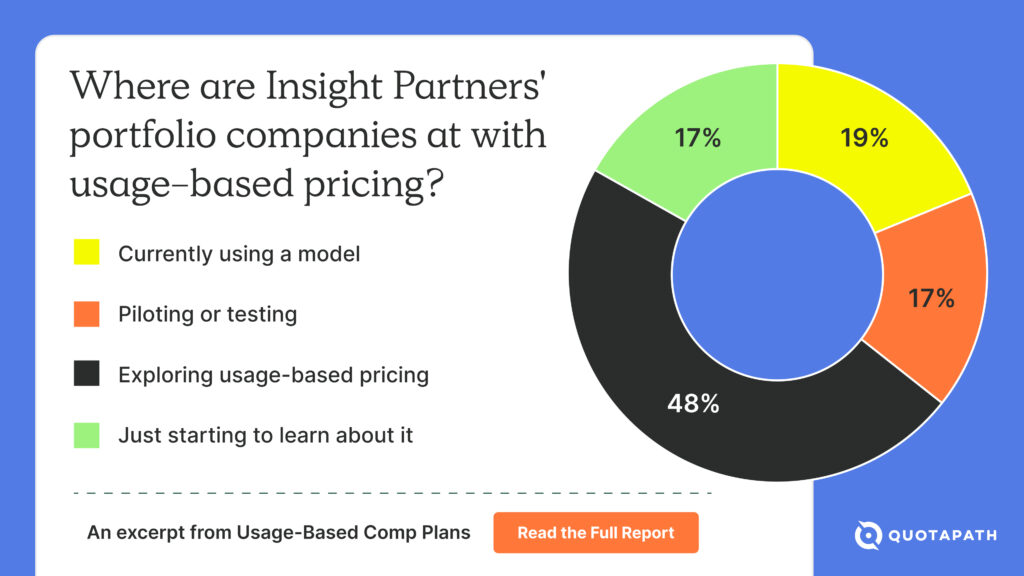

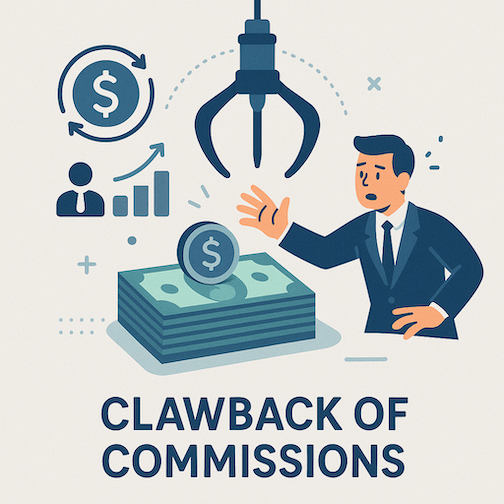

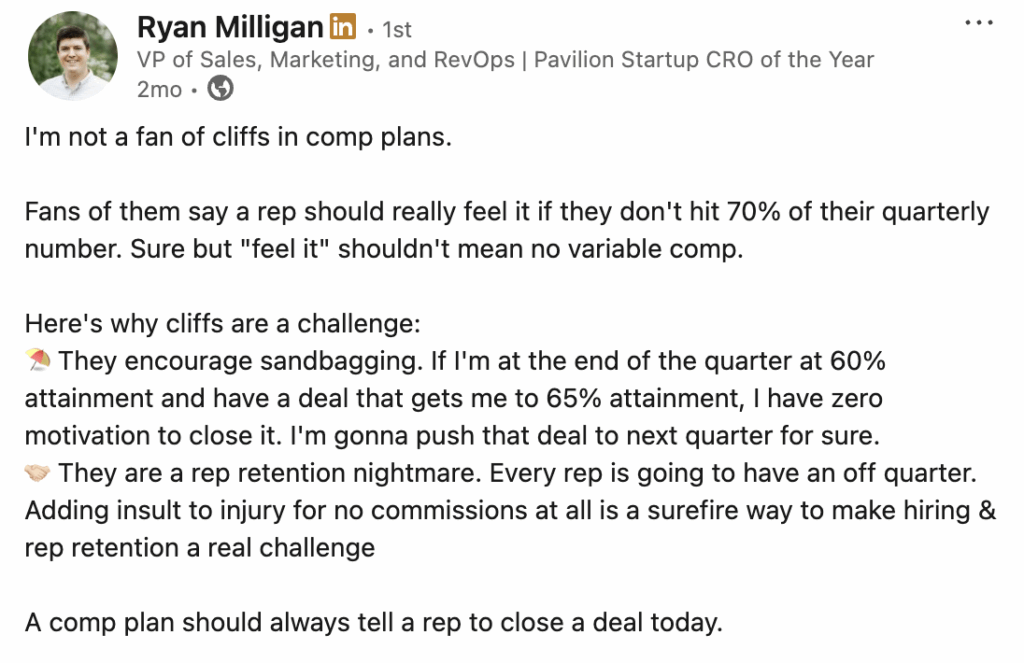
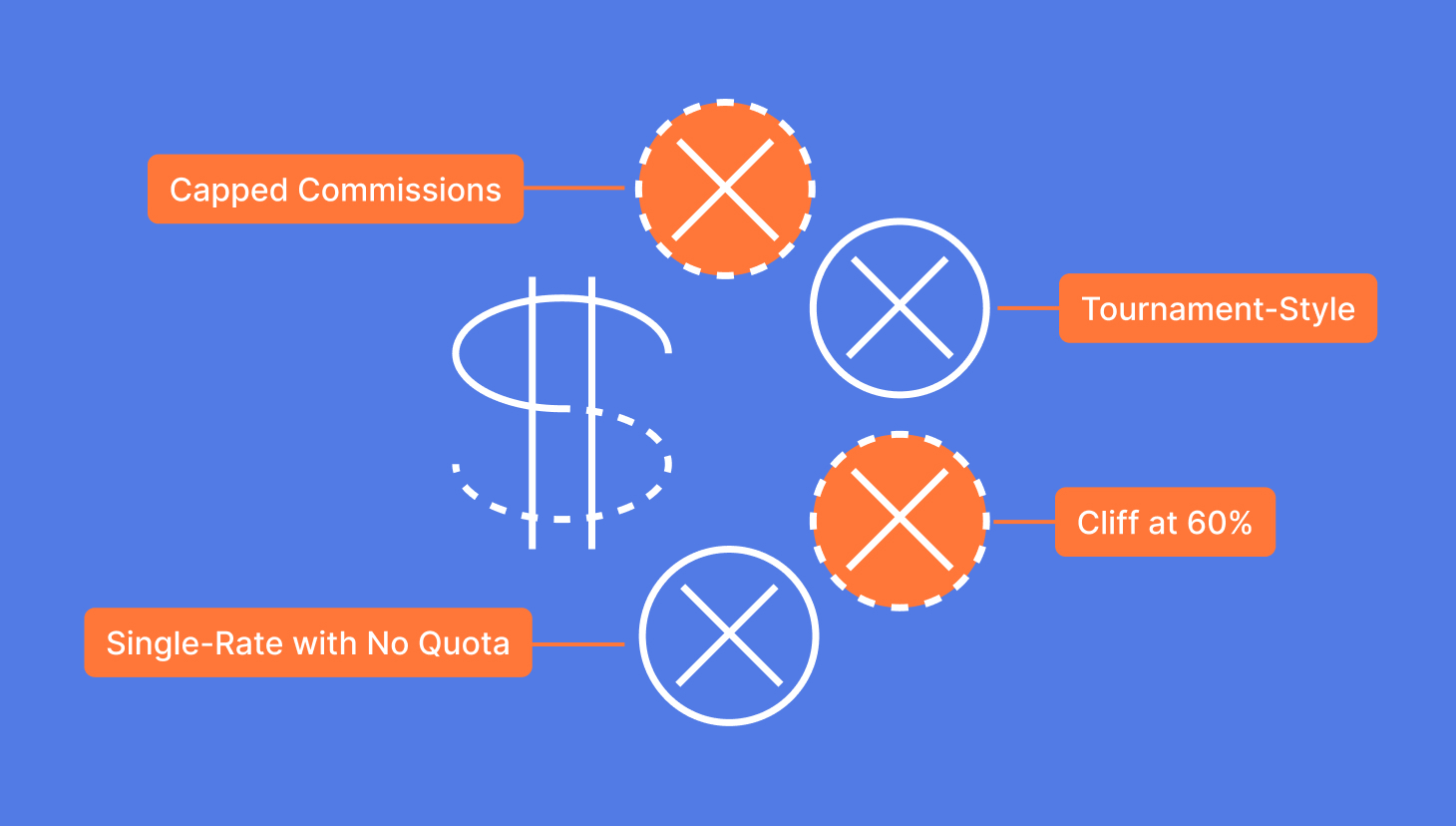



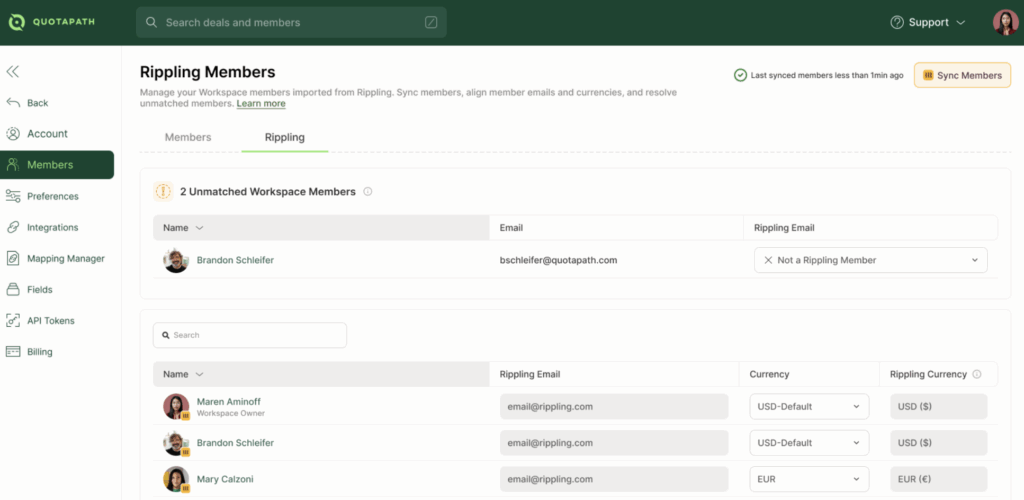

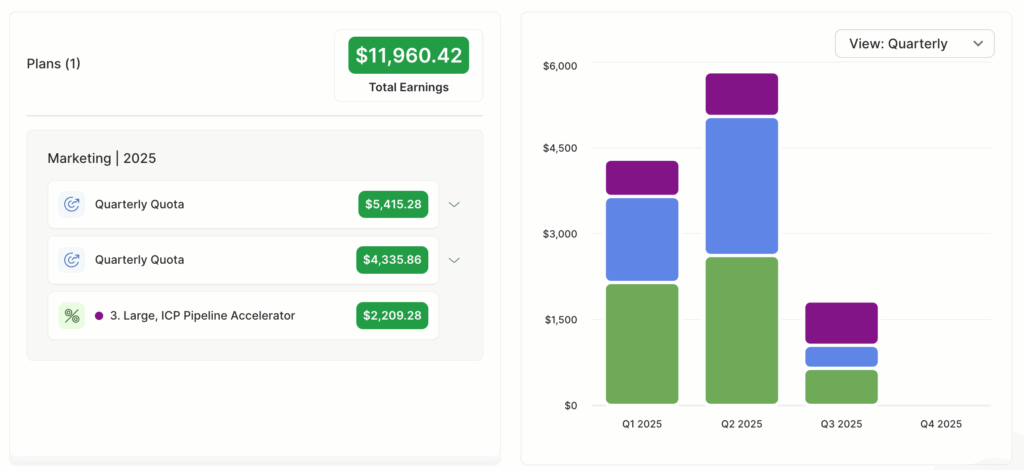
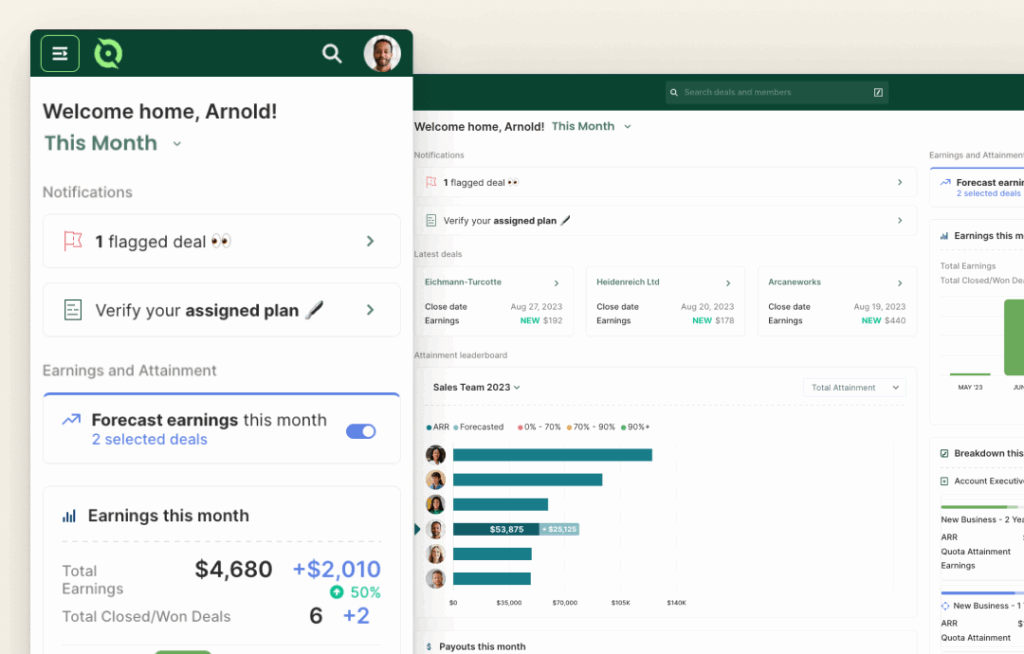
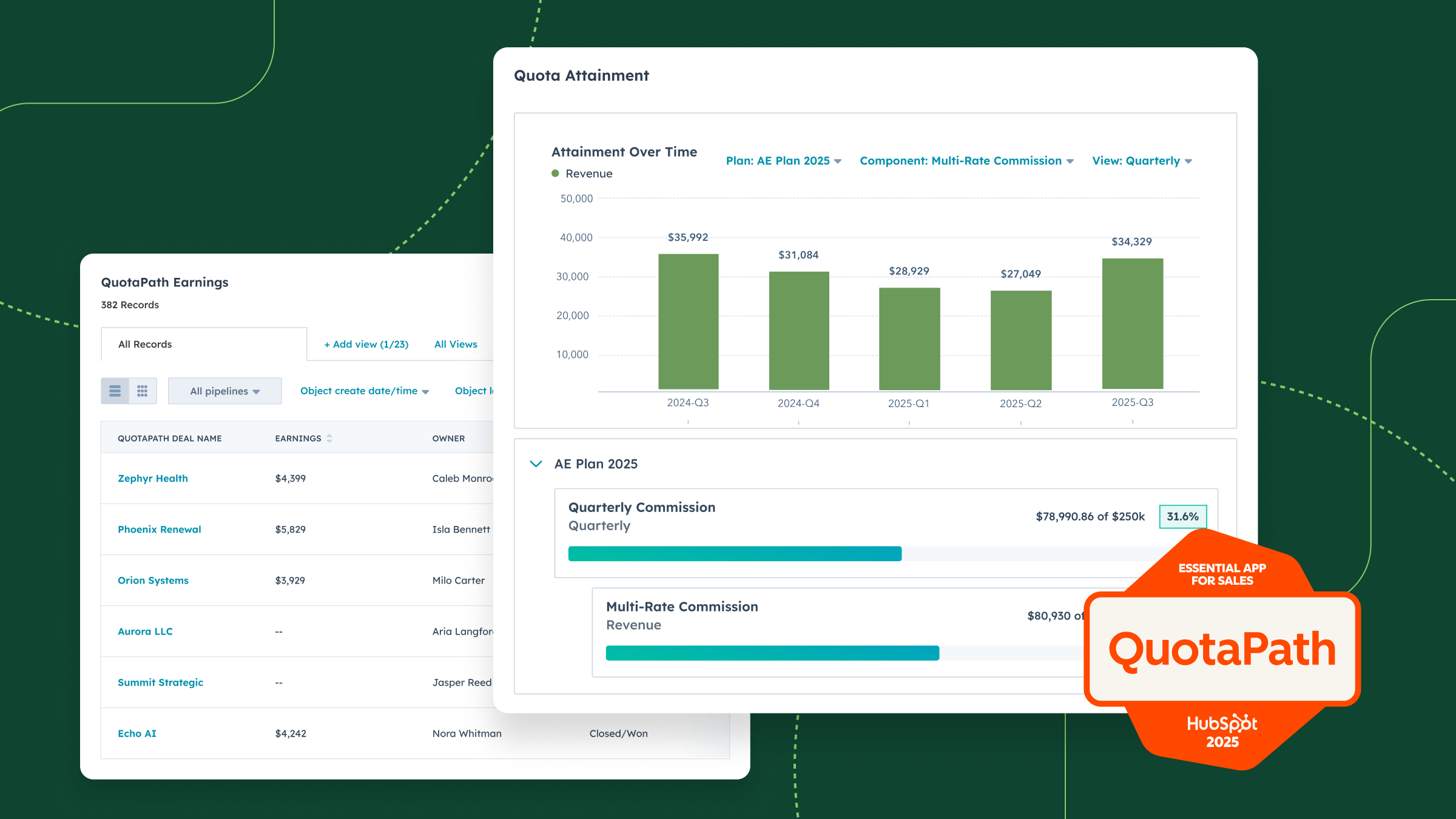



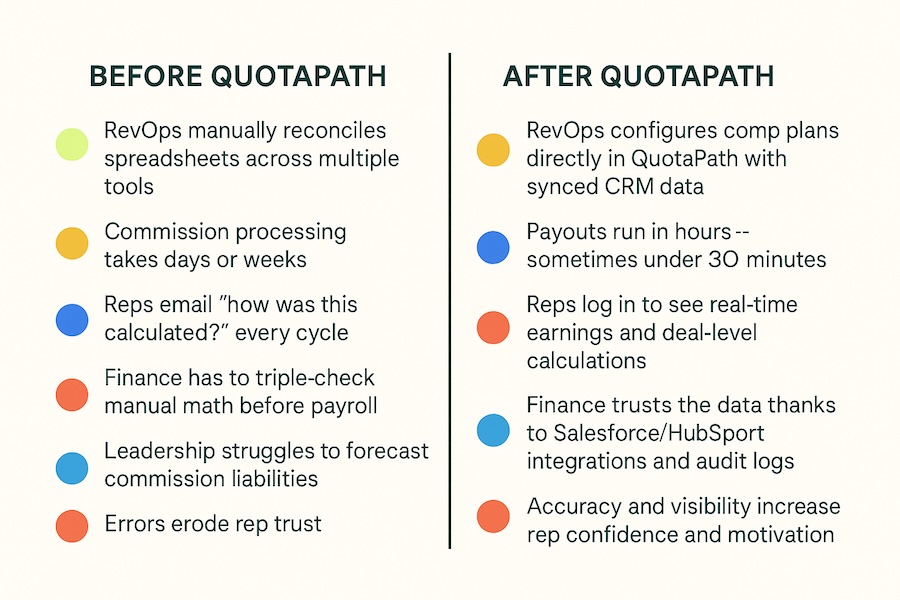
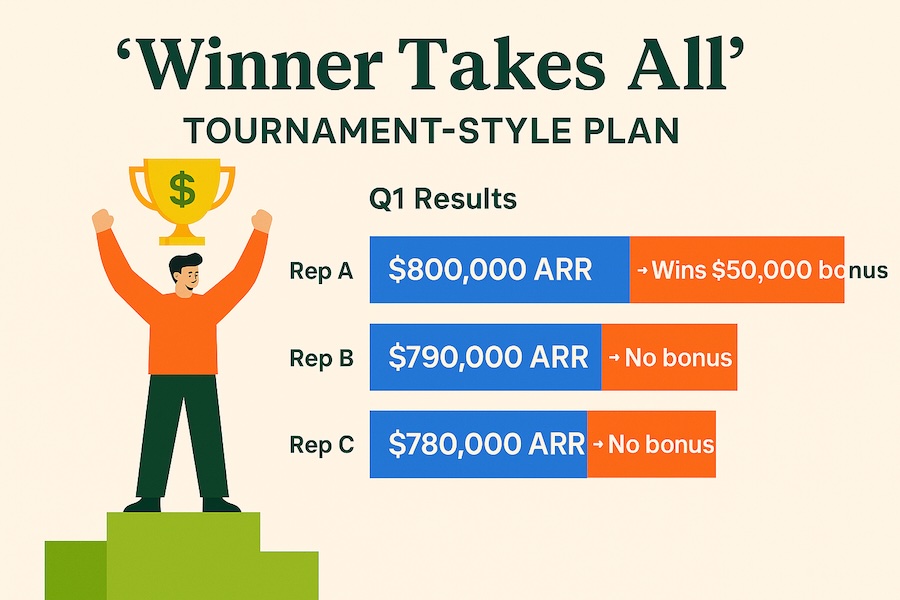
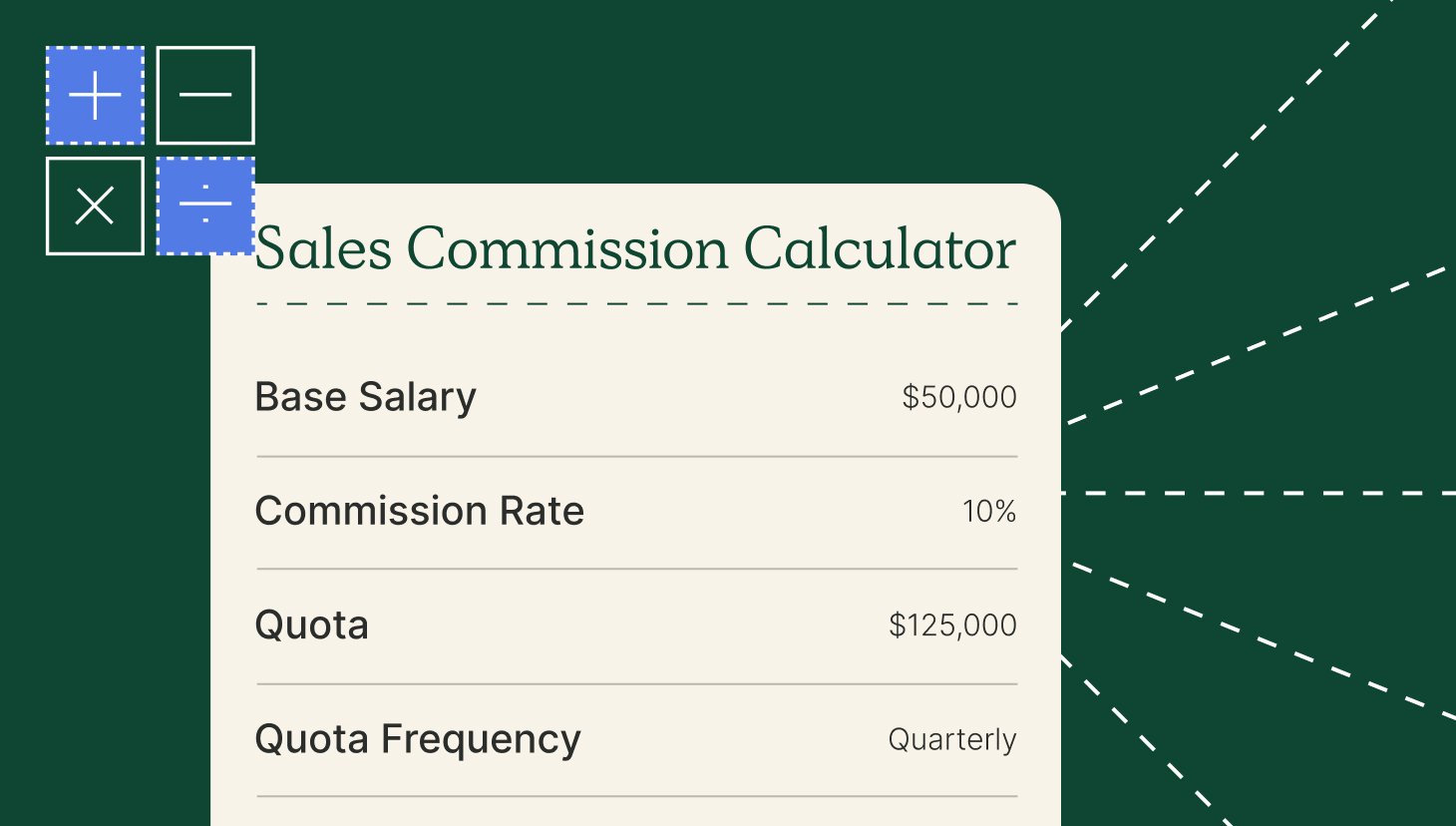
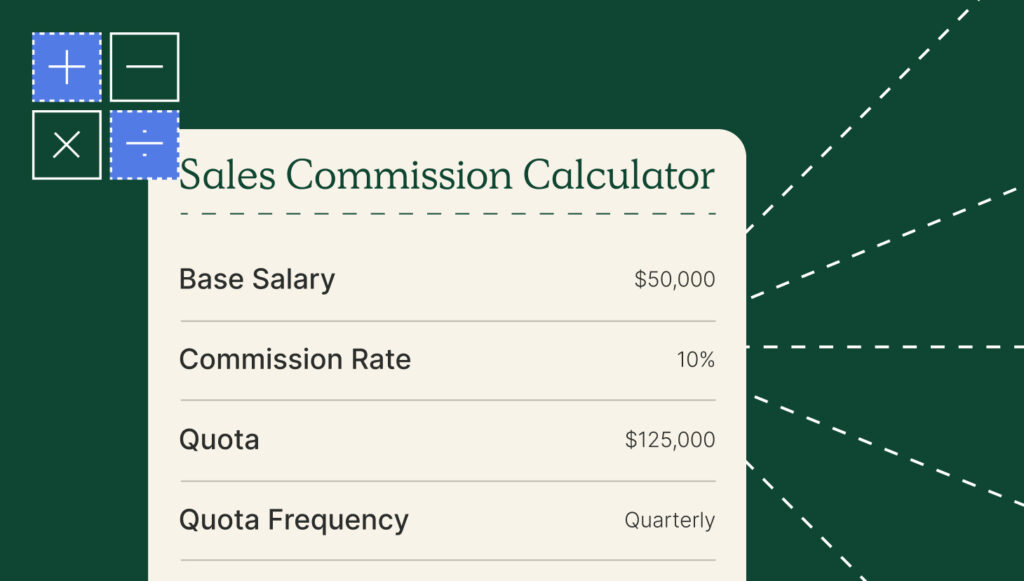

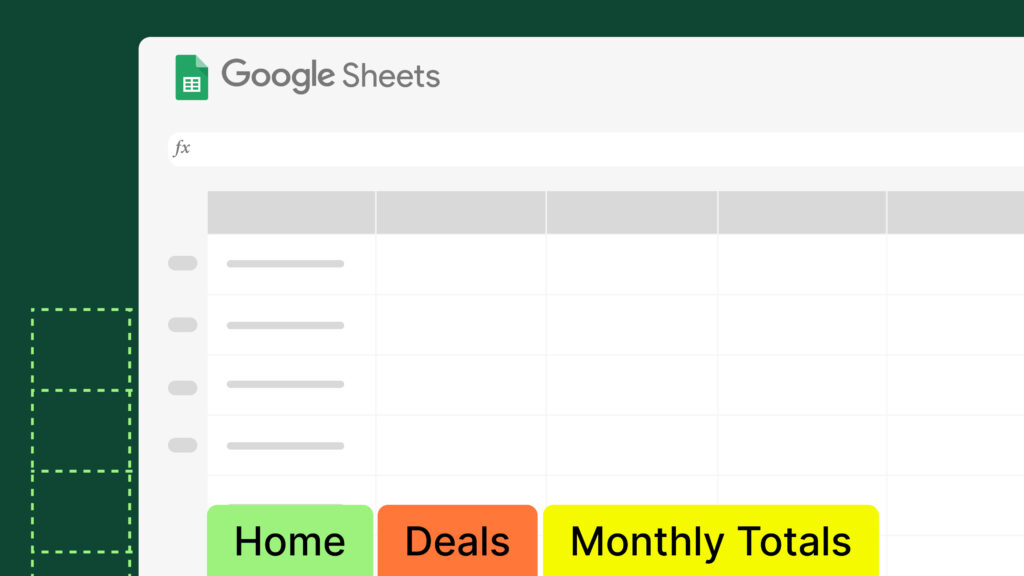
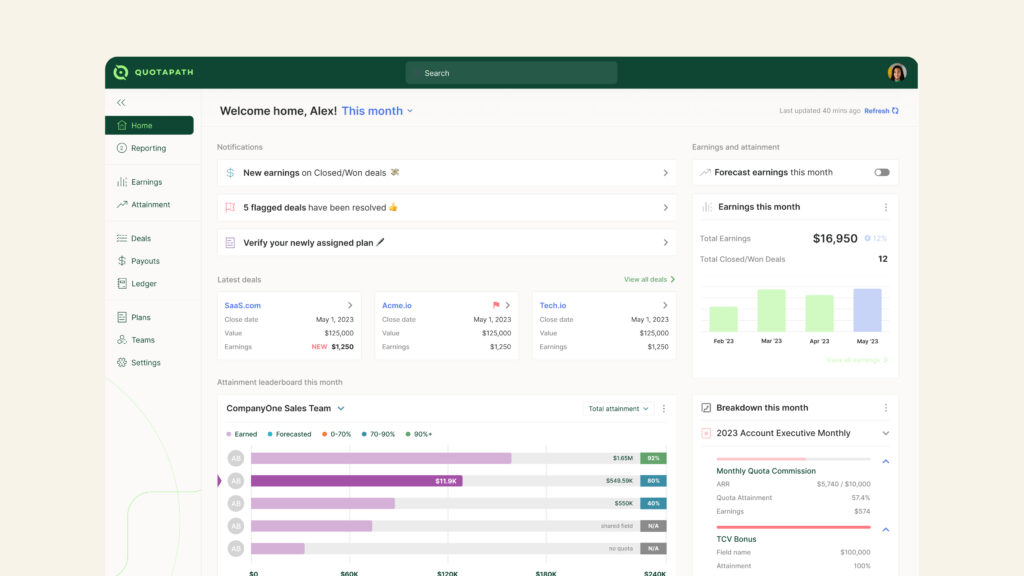




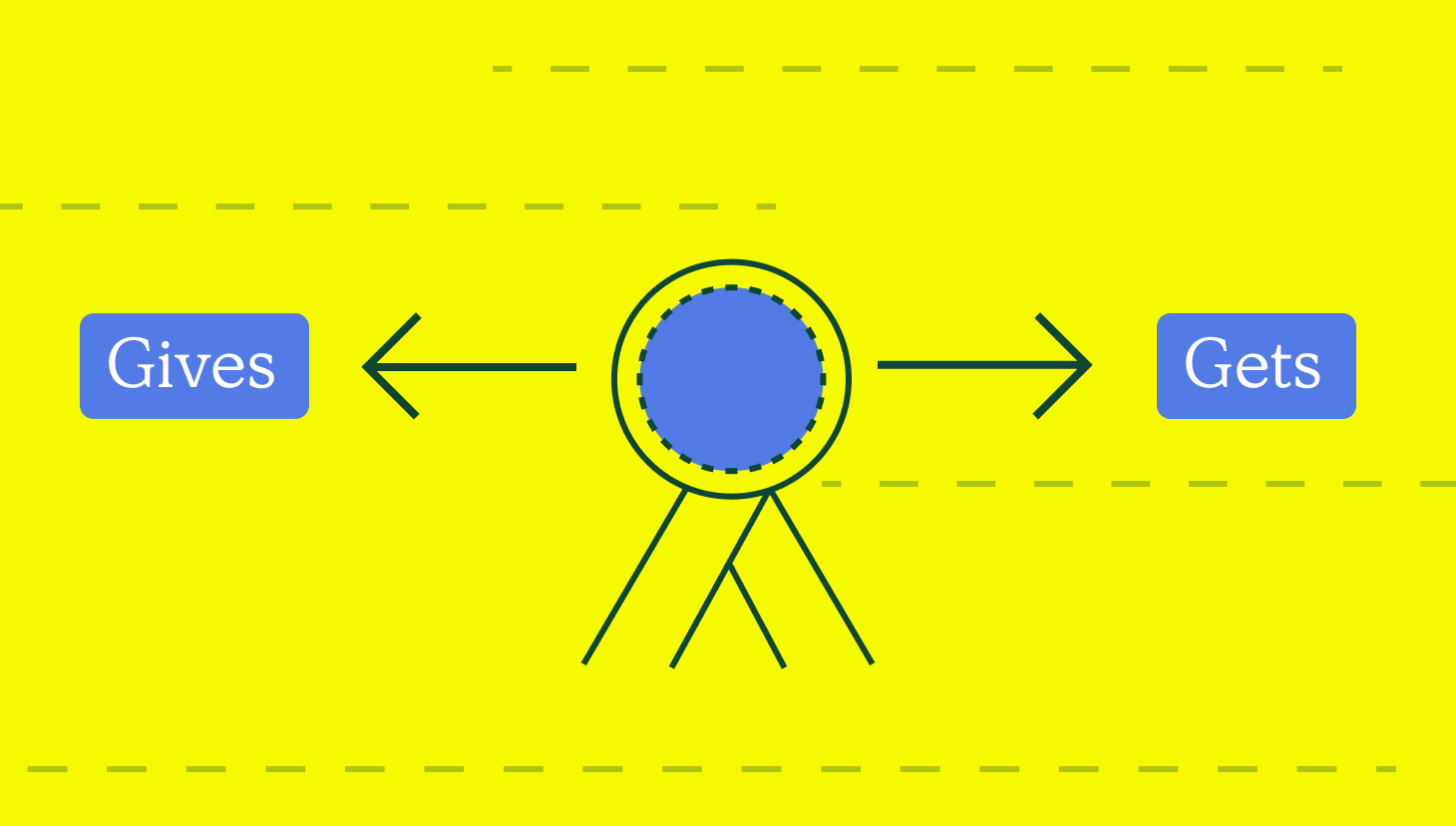
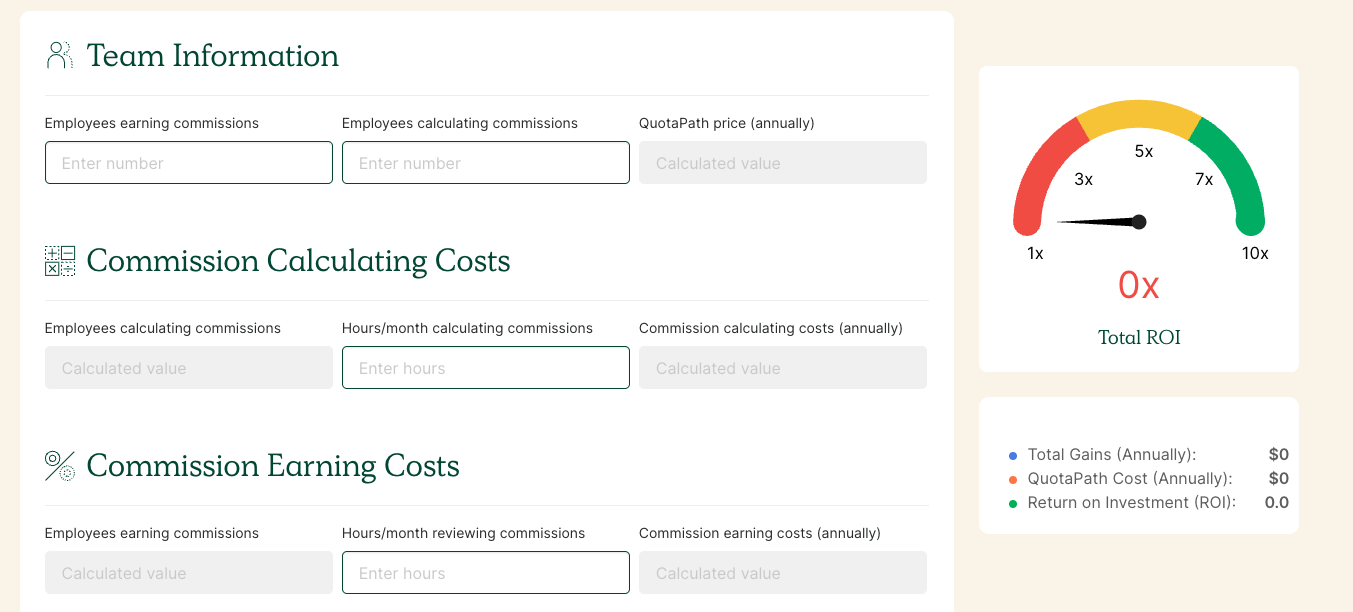
Recent Comments